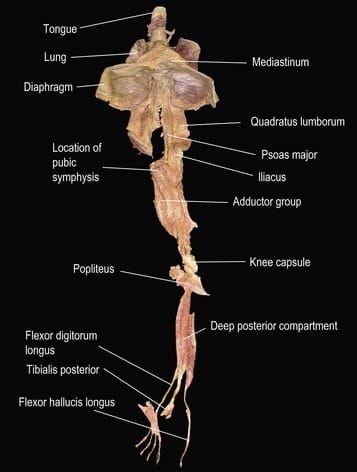- Dr. Cortez’s Cavity-Free Club
- Posts
- Infant Frenectomies Explained: Part 2
Infant Frenectomies Explained: Part 2
Why is a multidisciplinary team approach important for the mother-infant dyad?

In our last issue, we explored the recent rise in infant tongue-tie releases and asked the important question: are these procedures always necessary? We broke down what a tongue-tie (ankyloglossia) actually is—how it forms during fetal development, and how it can affect a baby’s ability to nurse effectively. We also looked at key signs and symptoms that show up not only in the baby but in the mother as well, such as nipple pain, prolonged feeding sessions, or colicky behavior.
We discussed Brazil’s national initiative to screen every newborn for tongue-ties and reviewed which providers can diagnose and treat them. But most importantly, we emphasized that surgery shouldn't be the first solution. A collaborative approach that includes functional providers—like lactation consultants, speech-language pathologists, craniosacral therapists, and others—is often the most supportive path forward for both mom and baby.
In today’s issue, we’re continuing that conversation by diving into what a true multidisciplinary care team looks like—and why it matters so much.
First, let’s talk about suck-swallow-breathe synchrony.
As the name suggests, this is the critical ability to coordinate sucking, swallowing, and breathing—allowing a baby to feed without choking. It begins in utero and is essential for survival, as it ensures smooth breastfeeding or bottle feeding while keeping the airway protected.
But what’s required for this synchrony to function well?
It depends on two major factors: the coordination of the muscles involved in breathing and swallowing, and the neural control centers in the brain that manage those muscles. These systems are linked by nerves, which carry signals that must be precisely timed and balanced.
Knowing how complex this synchrony is, it becomes clear that no single treatment should be seen as a cure-all. Instead, four key components should be evaluated and addressed:
1. Positioning of Baby and Mom During Feeding
A baby who is not well-positioned may struggle to latch or may unlatch frequently. An uncomfortable mom may tense up, which affects milk flow and emotional regulation—since a mother’s emotional state can directly influence the baby’s. This is where a skilled lactation consultant, particularly an IBCLC (International Board-Certified Lactation Consultant), is invaluable.
2. Bodywork for Nerve Function and Muscle Tension
The tongue is innervated by multiple nerves, and during a traumatic or even just intense birth, these nerves can become compressed or strained. A provider who specializes in bodywork—such as a chiropractor, osteopath, craniosacral therapist, or a physical therapist trained in infant care—can help release tension and restore nerve function.
Take a look at Figure 1: it shows the meridian connecting the tongue all the way to the toes. Tightness anywhere along this line can impact the tongue’s ability to move and coordinate with other functions.

Figure 1
3. Oral Motor and Sensory Therapy
As mentioned earlier, proper coordination between muscles and nerves is essential for suck-swallow-breathe synchrony. That’s why oral motor and sensory therapy plays a crucial role in helping babies feed more effectively.
This type of therapy, especially when done before a surgical procedure, may resolve feeding issues entirely. Post-surgical therapy is also important to support recovery and promote optimal function. Providers such as SLPs (Speech Language Pathologists), OTs (Occupational Therapists), and IBCLCs trained in infant feeding often lead this work.
4. Ankyloglossia (Tongue-Tie)
Notice that I’m placing this last. That’s because surgery should always be the last treatment considered. A frenectomy removes extra tissue (a remnant from incomplete fetal development) but should only be done when necessary—and after the baby has been fully evaluated and supported through the other three areas.
When needed, a tongue-tie-savvy dentist or ENT can perform the procedure. But remember post-operative care is just as important. A follow-up visit within one week is critical to ensure the wound heals open—not closed or reattached. Gentle stretches and continued breastfeeding help with this healing process.
Side note: This MRI video of a baby breastfeeding offers a fascinating glimpse into what’s happening internally during a feed—and shows just how beautiful and efficient suck-swallow-breathe synchrony can be when it’s well-coordinated. It’s a powerful reminder of how this harmony supports both baby and mother (dyad) in thriving together. Highly recommend watching it (If clicking the link doesn’t work, try copying this URL and pasting it directly into your browser: https://youtu.be/VP5MS_FTzQ0?si=vDUmUopNtHqeOdvH)
Resources
Rodriguez Gonzalez P, Perez-Cabezas V, Chamorro-Moriana G, Ruiz Molinero C, Vazquez-Casares AM, Gonzalez-Medina G. Effectiveness of Oral Sensory-Motor Stimulation in Premature Infants in the Neonatal Intensive Care Unit (NICU) Systematic Review. Children (Basel). 2021 Aug 31;8(9):758
Lau C. Development of Suck and Swallow Mechanisms in Infants. Ann Nutr Metab. 2015;66 Suppl 5(0 5):7-14. doi: 10.1159/000381361. Epub 2015 Jul 24
🌱 True wellness starts in your mouth.
Dr. Norma Cortez |